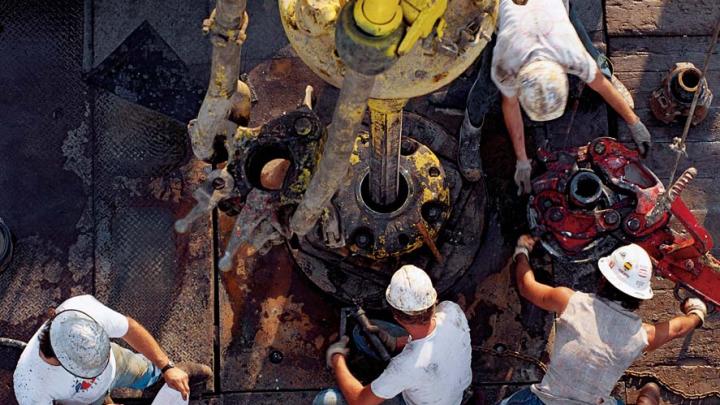As a professor at Harvard Business School, Robin J. Ely has had her share of experience with how men (who constitute 80 percent of the school’s faculty) conduct themselves in the workplace. But her research on how a work environment can influence masculine norms took place far from the campus, at two oil platforms in the Gulf of Mexico. Before her first trip to the rigs, in 2001, Ely thought she knew the type of men she’d encounter there. After interviewing some of the workers, though, she was stunned: “I called my colleague and said, ‘Where’s the masculinity?!’”
“I just didn’t see it, not in the tradition al way,” she recalls. of [the men] were big and burly; many drove Harleys and were into hunting and fishing; and their humor—while never mean-spirited—could be gross in that ‘peculiarly male’ way, such as farting and then laughing about it.” But the workers on the two rigs (which were dubbed Rex and Comus) surprised her by how openly they expressed their vulnerability, in terms of both physical limitations and emotional concerns. The typical image of masculinity, she explains, is one of impenetrable infallibility: manly men don’t like to say they don’t know, or need help, or are scared. The men at Rex and Comus were quick to do just that.
Ely, who focuses on organizational behavior, had not explicitly studied masculinity before, and when she first set off for the oil platforms, neither she nor her coauthor, Debra E. Meyerson, an associate professor of education and organizational behavior at Stanford University’s School of Education, knew what shape their project would take. Ely’s initial reaction prompted them to investigate why the workers were so unexpectedly in touch with their emotions and shortcomings. In their paper, as yet unpublished, they argue that the soft side the workers displayed was a by-product of organizational features the parent company had put in place to make the workplace safer. As part of an initiative called “Safety 2000,” the rig workers were trained to put safety above image and to speak up when they were unsure about something. Because safety was such an easy goal to support, the men took the program to heart, Ely noticed, even when that meant breaking masculine norms. During a bumpy helicopter ride, for instance, one man said, “I don’t feel safe.” Rather than mock him, the other men took his concern seriously and worked to rectify the problem.
Fear wasn’t the only emotion workers on Rex and Comus communicated openly. Because any outside issue could be a distraction, and any distractions could be dangerous, they stayed closely attuned to each other’s emotional states. One work er spoke to the research ers about a team member who returned to work only a few days after his daughter had been shot at: “He told us, ‘This is what I’m dealing with at home. If you all would please keep me focused and understand if I’m a little distracted, I’d appreciate it.’ And people were very supportive of him for that.”
The work environment for these men, who ranged in age from about 21 to 58, wasn’t always so touchy-feely. When Ely voiced surprise at how far they were from the macho prototype, the older men invariably responded, “Oh yeah, it used to be like that.” One 27-year veteran spoke of the old days on drilling rigs, when “the guy that was in charge was the one who could basically outperform and out-shout and out-intimidate all the others.” But by creating policies and norms that shifted the men’s focus from proving their masculinity to engaging in larger goals—ensuring safety, building a community, and advancing the company’s mission—their employer was able to reshape their previous notions of what a manly man should look and sound like.
Ely and Meyerson plan a comprehensive follow-up survey of a broad sample of oil platforms, to test in a more varied population their hypothesis that certain organizational features can break down employees’ need to project a macho image. Meanwhile, their work adds an interesting case study to gender literature, which tends to focus only on women. But Ely notes that further research is needed to determine how generally applicable their findings are. After hearing about her research, she says, an executive from another oil company expressed interest in having her team observe his firm’s corporate headquarters and suggest ways to break down the masculine norms there. She believes it might be diffi cult to replicate the oil-rig situation, where workers live, eat, and sleep on the rigs for two-week stints (which makes them a captive audience for organizational-change efforts), and where their work is so dangerous. “Not dying, not blowing up, not losing legs—that meant a lot to them,” Ely says. “In the corporate environment, you don’t have that compelling incentive to change.”
~Samantha Henig








